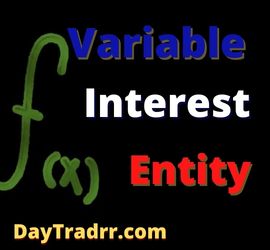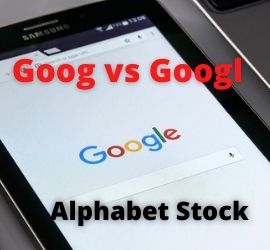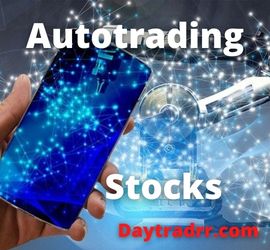What Is Dark Pool Trading?
 Dark pool trading takes place on privately organized financial forums or exchanges. Here, large traders conduct securities transactions without public disclosure until after the trades are executed and cleared. Dark pools enable institutional investors to trade without risk until the trade is complete. These private pools are a sort of alternative trading system (ATS). Dark pool trading allows select investors to place huge orders and trade without publicly disclosing their intentions while looking for a buyer or seller. Private dark pools were created largely to assist block trading by institutional investors. Large volumes could potentially disrupt markets with saturated supply resulting in poor prices for these trades.
Dark pool trading takes place on privately organized financial forums or exchanges. Here, large traders conduct securities transactions without public disclosure until after the trades are executed and cleared. Dark pools enable institutional investors to trade without risk until the trade is complete. These private pools are a sort of alternative trading system (ATS). Dark pool trading allows select investors to place huge orders and trade without publicly disclosing their intentions while looking for a buyer or seller. Private dark pools were created largely to assist block trading by institutional investors. Large volumes could potentially disrupt markets with saturated supply resulting in poor prices for these trades.
Dark pools are sometimes portrayed negatively, although they serve a legitimate purpose. They allow massive trades to take place without disrupting the overall market. However, their lack of transparency exposes them to potential conflicts of interest on the part of their owners. Moreover, they can attract predatory trading activities from some high-frequency traders.
Dark Pool Trading – A Closer Look
The Securities and Exchange Commission (SEC) authorized brokers to transact big block trades in the 1980s. It was during this period dark pool trading emerged. Then, in 2005 an SEC ruling encouraged competition and reduced transaction costs. This action coupled with the emergence of electronic trading prompted an increase in the number of dark pools. Dark pools are generally hosted within a major corporation or a large bank. The result is a reduced fee structure than the normal securities exchange charges.
The fundamental benefit of dark pool trading is that institutional investors can make huge trades. Moreover, they can accomplish this without exposing themselves while locating buyers and sellers. This avoids the severe price devaluation that would otherwise occur. For example, consider an investment bank attempting to sell half-a-million shares of stock. If it became public knowledge, the stock’s value would most likely decrease by the time all of the shares can be sold. Devaluation has become increasingly possible with electronic trading platforms. Lightning-fast trades are driving prices to respond to market pressures much more swiftly. However, if the dark pool trading data is released just after the deal has been completed, the news has considerably less of an impact on the market.
How Dark Pool Trading Works
These dark pools function similarly to traditional stock exchanges in that they connect buyers and sellers. However, they provide certain benefits to institutions and large traders. For one thing, bids and offers aren’t as frequently quoted as they are on public exchanges. This makes it simpler for huge mutual or hedge funds to transact in enormous blocks of stock without causing market volatility. If a mutual fund places a 5 million share sell order on the NYSE, the security’s price would likely fall substantially as other traders rush to sell first. By listing that block of stock on a dark pool, large funds avoid notifying other market participants. The results of dark pool trades are not immediately reported outside of the pool. Therefore, high volume trades in a dark pool will not disrupt other market participants.
Dark pools are also beneficial to high-frequency trading firms. These firms use tactics that generate thousands of trades per day. Dark pools offer reduced fees and commission reductions when compared to routing orders through a public stock exchange.
Dark Pools and High-Frequency Trading
High-frequency trading (HFT) has grown to dominate the daily trading activity. Particularly, with the development of supercomputers capable of executing algorithmic-based programs in milliseconds. HFT technology enables institutional traders to execute orders for multimillion-share blocks ahead of other investors. Even fractional price changes can be highly profitable with large blocks of stocks. When successive orders are completed, HFT traders profit immediately and close off their positions. This type of transaction occurs dozens of times every day, resulting in massive profits for HFT traders.
HFT has become so pervasive that it is increasingly difficult to execute large trades through a single exchange. As a result, large HFT orders must be spread among multiple exchanges to avoid alerting trading competitors. Otherwise, competitors could then get in front of the order and snatch up the inventory, driving up share prices. All of this occurs within milliseconds of the initial order being placed.
To evade the scrutiny of public exchanges and provide liquidity for massive block trades, numerous investment banks developed secret exchanges, called dark pools. Dark pool trading provides a market for buyers and sellers with the liquidity to complete trades for large orders. It provides a perfect environment for large traders who are unwilling to place open orders on public exchanges. Moreover, it conceals their actions to avoid telegraphing their intent.
Dark Pool Regulations
Some market pundits would have you believe that dark pools are simply the Wild West of the financial world. Dark pools are regulated, with national financial authorities in the individual countries monitoring their actions and business practices. As the number of dark pools increases, authorities and legislators are becoming more concerned about how they are managed. As a result, dark pools are subject to additional and updated legislation to regulate how they operate.
In the U.S., the SEC closely regulates alternative trading systems, also known as dark pools. The SEC has updated its Regulation ATS over the years to adjust to investor feedback and advances in technology. The SEC maintains a registry of all operational alternative trading systems, which it updates monthly. To be an approved ATS, an operator must register as a broker-dealer and file operation reports, among other requirements.
To comply with Regulation ATS, an ATS must, among other things, register as a broker-dealer and file an initial operation report with the Commission on Form ATS before commencing operations. Thereafter, an ATS must file amendments to Form ATS to provide notice of any changes to its operations and must file a cessation of operation report on Form ATS if it ceases operations. Form ATS is not an application and the Commission does not approve an ATS before it begins operation. Form ATS is, instead, a notice to the Commission. The requirements for filing reports using Form ATS can be found in Rule 301(b)(2) of Regulation ATS. (Source: sec,gov)
Dark Pool Trading Abuse
Despite being legal, dark pools can operate with little transparency. There are those who criticize HFT for giving some investors an unfair edge. The same criticism is leveled at the lack of transparency in dark pools, which might disguise conflicts of interest. Due to complaints, the SEC conducted research and issued a report in 2015, analyzing dark pools for illegal front-running. This practice occurs when institutional traders place their order ahead of a customer’s order. It allows the front-runner to gain on an increase in share prices. Dark pools’ supporters argue that they supply critical liquidity, allowing markets to operate more efficiently.
Many dark pools find it difficult to attract enough liquidity to reach and maintain critical mass. They have approached this existential issue in a variety of ways. Many dark pool operators, for example, have permitted their own proprietary trading desks access to their pools. Others have enabled their affiliates to trade within their pools. Many operators also grant high-speed traders access to their dark pools. All these efforts are to ensure that ATS customers locate counterparties for their trades rapidly and reliably.
Attracting sufficient liquidity to achieve critical mass has proven a continuous challenge for many dark pools. They have addressed this existential problem in various ways. For example, many dark pool operators have allowed their own proprietary trading desks to have access to their pools, while other operators have allowed their affiliates to trade within their pools.[16] And still, other operators have given high-speed traders access to their dark pools,[17] all in an attempt to ensure that ATS subscribers will find counterparties for their trades as quickly and consistently as possible. (Source: sec.gov)
Dark Pools and Individual Investors
On its website, the SEC identifies all of the registered dark pools on its Alternate Trading System (ATS) List. The majority of the main dark pools are broker-dealers based in New York. The SEC and FINRA have jurisdiction over these dark pools. The list contains dark pools that predominantly trade stocks and bonds and support a variety of algorithmic methods. For example, high-frequency trading (HFT) strategies. Including those that transmit different sections of orders to different dark pools in different sequences.
In general, individuals cannot access dark pools directly. However, individuals can’t walk onto the floor of the NYSE to buy and sell stocks either. Orders must be routed through financial professionals such as brokers. However, if your broker actually routes your order through a dark pool, this can have an impact on your returns. As a result, you should inquire with your broker about their trading practices.
Up Next: What Is a Variable Interest Entity (VIE)?
 A variable interest entity (VIE) is a legitimate business structure where an investor can have controlling interest without holding majority voting rights.
A variable interest entity (VIE) is a legitimate business structure where an investor can have controlling interest without holding majority voting rights.
A variable interest entity is a legal corporate structure. It is established such that a single investor can control the company while not having majority voting rights. The controlling interest is handled through a contractual partnership rather than through direct ownership. Characteristics include a structure where equity owners do not have to fund the business’s continuous operating demands. The VIE is typically used to safeguard the firm from creditors or legal action. Variable interest entities are often employed as special purpose vehicles. In turn, these are used to finance certain investments without exposing the parent business to risk. Companies that are the major beneficiary of a VIE must include the entity’s holdings in their consolidated balance sheet.




